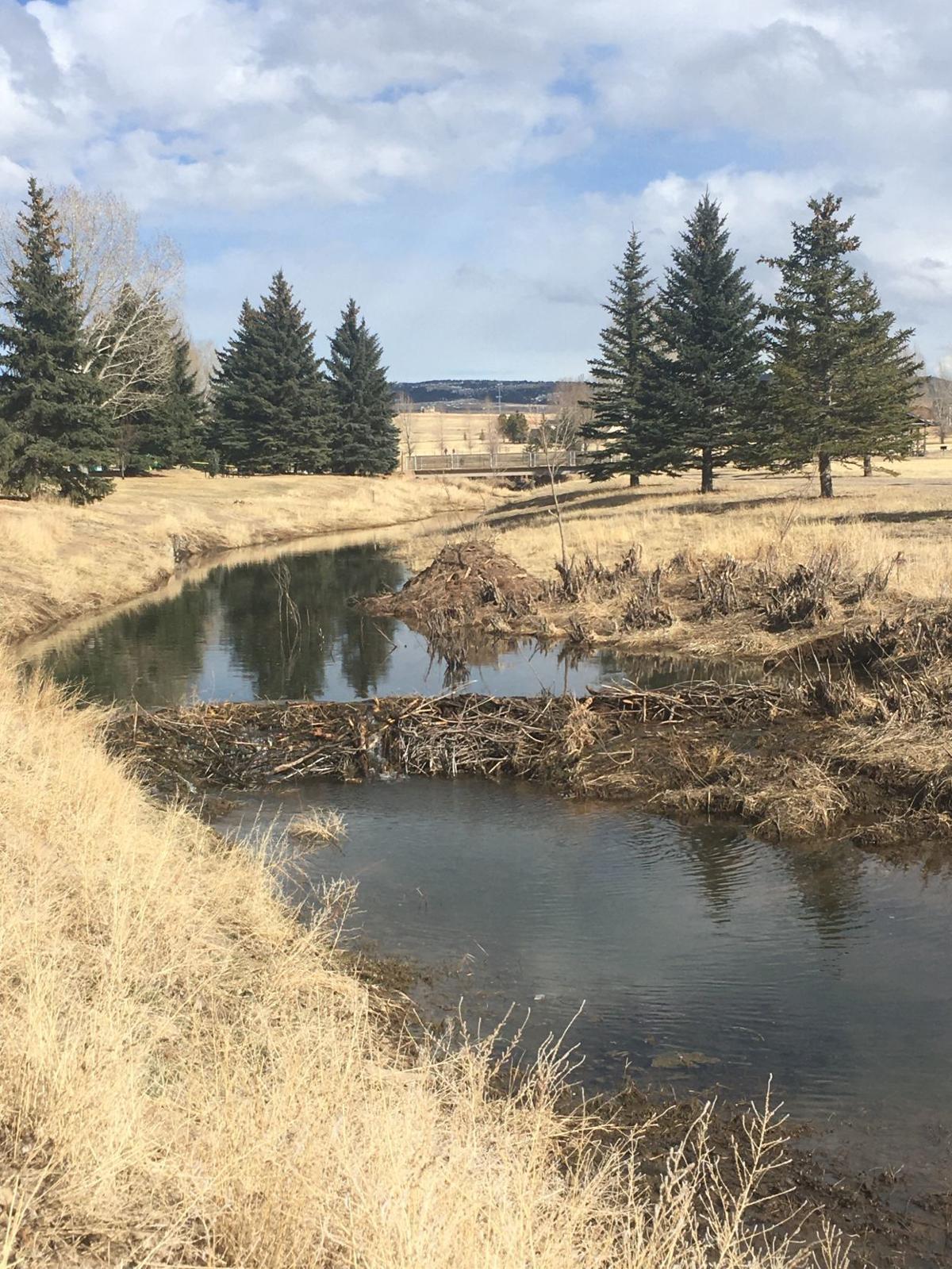Beavers making themselves at home
Beavers making themselves at home in Spring Creek
Some of Laramie’s newest residents might be getting the boot soon, mainly for squatting in a public park, eating public property and threatening to cause flood damage.
Beavers have been hard at work for the last few months building dams in Spring Creek, which runs along Laramie’s south side from east of 30th Street to the Laramie River. As neighbors go, they keep to themselves and stay home during the day. But the city has its eye on them nonetheless.
Lee Knox, a wildlife biologist with the Wyoming Game and Fish Department, said beavers move into Spring Creek every year from the Laramie River, which has a large population.
“They disperse out into new territories and tributaries, so they come up from the river,” he said.
The large, nocturnal rodents, distinct with their broad tails and over-sized front teeth, take down trees and other plants to use for food and to build dams and lodges in waterways. They often settle around LaPrele Park because it’s one of the few places along the channel with food, generally willows and Russian olive trees growing in the creek bed.
In natural streams, their dams play a critical role in maintaining a healthy system by holding water, backing up sediment, eliminating erosion and stabilizing channels.
“Overall, beavers are very critical to ecosystems,” Knox said.
Fisheries biologist Steve Gale said beaver dams are important for aquatic wildlife as well. Water behind dams stays cool and releases slowly.
“Even during the summer months, streams can have cooler water flowing down, which is better for aquatic life and aquatic insects, especially when it comes to trout,” he said.
Spring Creek is home to wild brown trout, some of which migrate from the Laramie River to spawn. Others live in the creek year-round. Migrating trout can’t always get around a beaver dam, but healthy tributaries contribute to the overall health of the Laramie River and its fish populations.
Gale has monitored trout in the creek for several years and has noticed more anglers using it recently.
“It’s not just a conduit for water,” he said. “It’s also a neat fishery with some important aquatic values to it as well.”
The problem for the beavers, however, is that Spring Creek isn’t managed by the city as a natural stream. Its primary purpose is to direct runoff through town to the river.
City engineer Eric Jaap said beaver dams threaten the ability of Spring Creek to channel water. Sediment that collects behind the dams reduces the creek’s overall capacity, and the dams themselves could cause flooding.
“The Spring Creek channel already has some possible capacity issues in it,” he said. “Whenever a beaver dam is put in there, during high flood events there’s the possibility that the dam could wash out and clog up one of our bridges down below or any of our structures down below.”
The creek is fed by several springs, but it also drains water that runs off Pole Mountain and from city streets as far away as 45th Street.
“There’s a large drainage basin that goes into the Spring Creek channel,” Jaap said.
It can fill quickly during a summer rainstorm, when the water can rise to just a few feet below the bottom of the bridges that cross it.
“Spring Creek has that recreation purpose, but its main point is flood control,” he said.
As for those delicious-looking trees in the park — they’re off-limits. Tyler Shevling, who works in the city’s Parks and Recreation Department, said beaver activity becomes hazardous when they start chewing through park trees, which are valuable to the city and can threaten to fall on people. So far this year, they’ve confined themselves to vegetation in the stream bed, but they’ll exhaust that supply soon enough.
“They’ve taken out a lot of the little willows and volunteer cottonwoods that have come up, and some of the Russian olives that are in the channel, but none of that is supposed to be in the channel anyway, so we’ve gone ahead and just let them take those down,” he said. “Once they start running out of materials in the channel, we imagine they’ll expand what they’re looking for.”
Shevling said the city hopes to relocate the beavers this fall, which is the best time to transplant the species. If there’s room in the budget, the city will hire a trapper. Otherwise they’ll try to get permission from Game and Fish to do it themselves.



